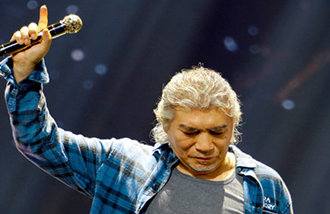[Op-Ed] `Featureless` Free Economic Zones
[Op-Ed] `Featureless` Free Economic Zones
Posted May. 11, 2009 02:45,
Before China designated its southern city of Shenzhen a special economic zone in 1979, the city was as desolate as most provincial rural areas in mainland China. After the designation, however, foreign companies flocked to the city and began Shenzhen`s annual growth of 30 percent over the next 20 years. The city was transformed into a modern metropolis with streets filled with expensive imported cars and living expenses as high as Seoul`s. After recognizing the contribution of multinational companies to a citys development, China continued to designate cities as special economic zones, and has 140 of them. They are the fruits of the late Chinese leader Deng Xiaopings policies of reform and opening up that transformed China into the worlds factory.
With abundant labor and low wages, China became the most attractive destination for production bases of top global companies. Those that planned to invest in Korea turned to China instead, and Korean companies soon followed suit. Such a trend gained more momentum after the inauguration of President Roh Moo-hyun in 2003. His administration gave the impression that Korean society does not welcome foreign capital. The Korean Confederation of Trade Unions and its member unions also helped drive away foreign investment with extreme and political labor protests. As a result, Korea found itself far behind its competitors in the region including Hong Kong, Singapore and Thailand in attracting foreign direct investment. It is no coincidence that Korea failed to enjoy the benefits of the previous global economic boom and saw employment decline under the Roh administration.
Roh also introduced policies to develop free economic zones to attract foreign direct investment, including those in Incheon, Busan-Jinhae and the Gwangyang Bay Area, in 2003. With the additional designations of Hwanghae (Gyeonggi, South Chungcheong Province), knowledge-creation type (Daegu-North Gyeongsang Province) and Saemangeum-Gunsan (North Jeolla Province) since the inauguration of President Lee Myung-bak, Korea has six free economic zones under development. Unfortunately, they are behind China`s in attracting foreign direct investment. Furthermore, they are also less attractive in tax benefits and living environment for foreigners, including education and health services.
With Jeju Islands elevation to the status of a free international city, all of Korea`s provinces except Gangwon and North Chungcheong have free economic zones. Unfortunately, it is hard to tell them apart since their strategies are identical, including the same comprehensive development plans that span logistics and cutting-edge service industries. Cutting-edge and tourism and leisure industries are always included in those strategies. With such featureless strategies, however, free economic zones in Korea can hardly be expected to achieve their intended purpose of attracting foreign investment. If authorities in charge continue to waste money on overlapping investment instead of attracting foreign investment as they should, the zones are useless. Those without competitiveness should be removed without hesitation to save taxpayers money.
Editorial Writer Park Yeong-kyun (parkyk@donga.com)







